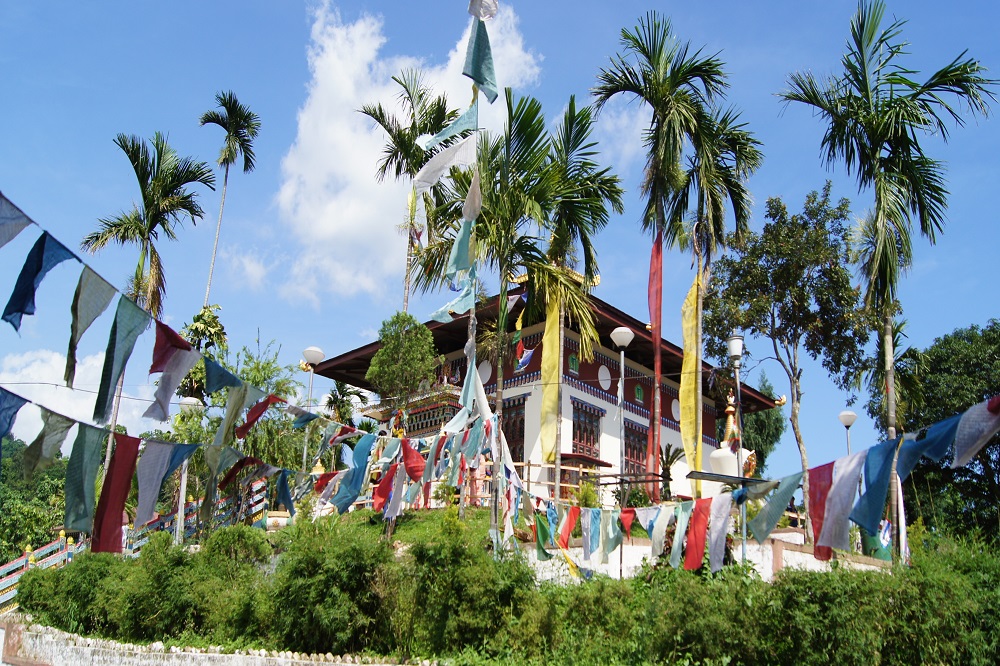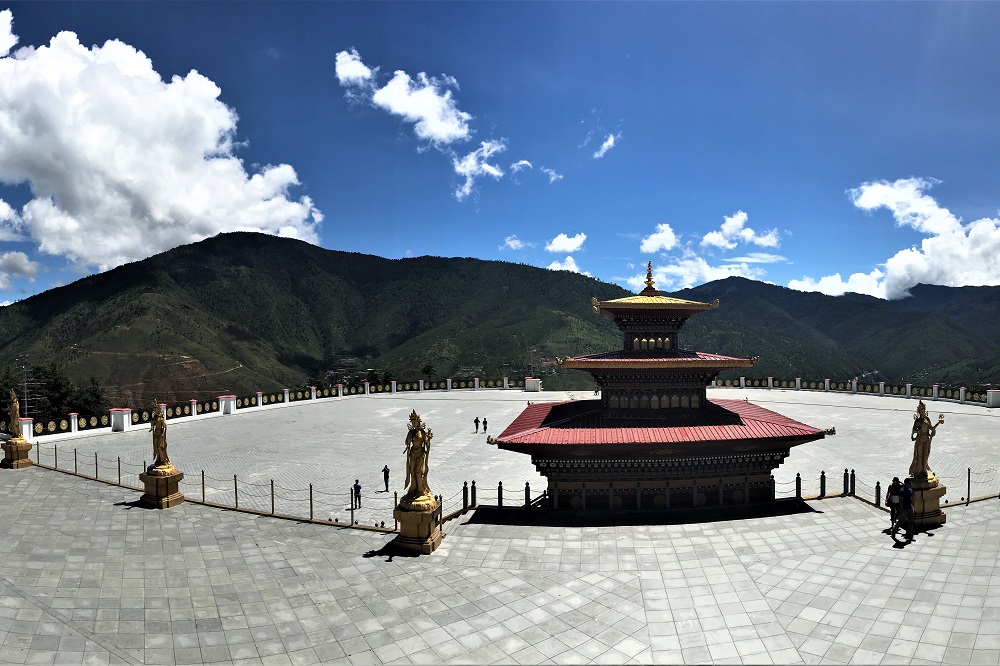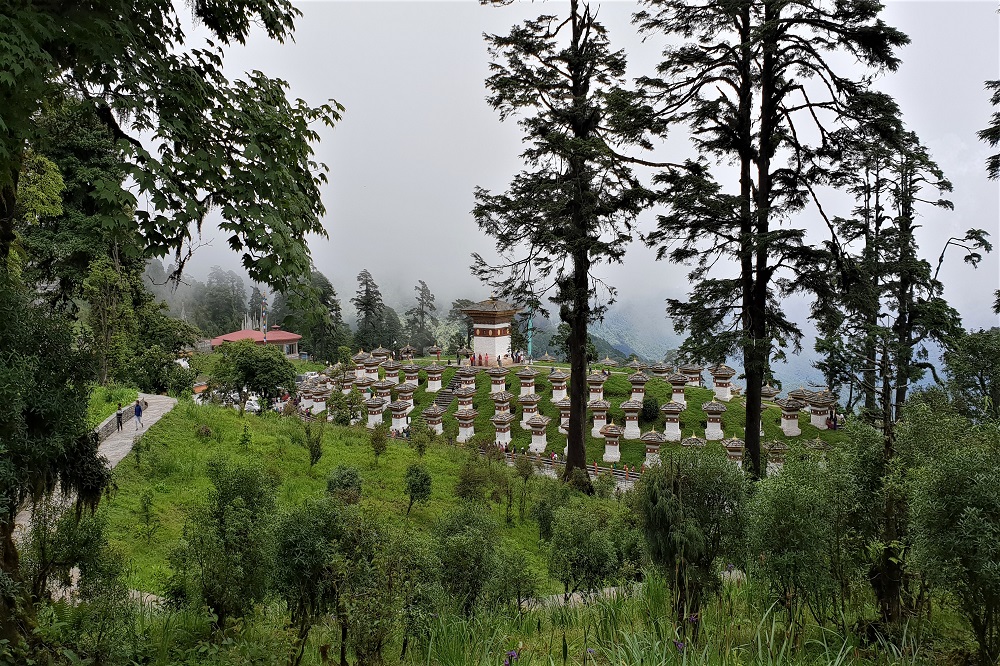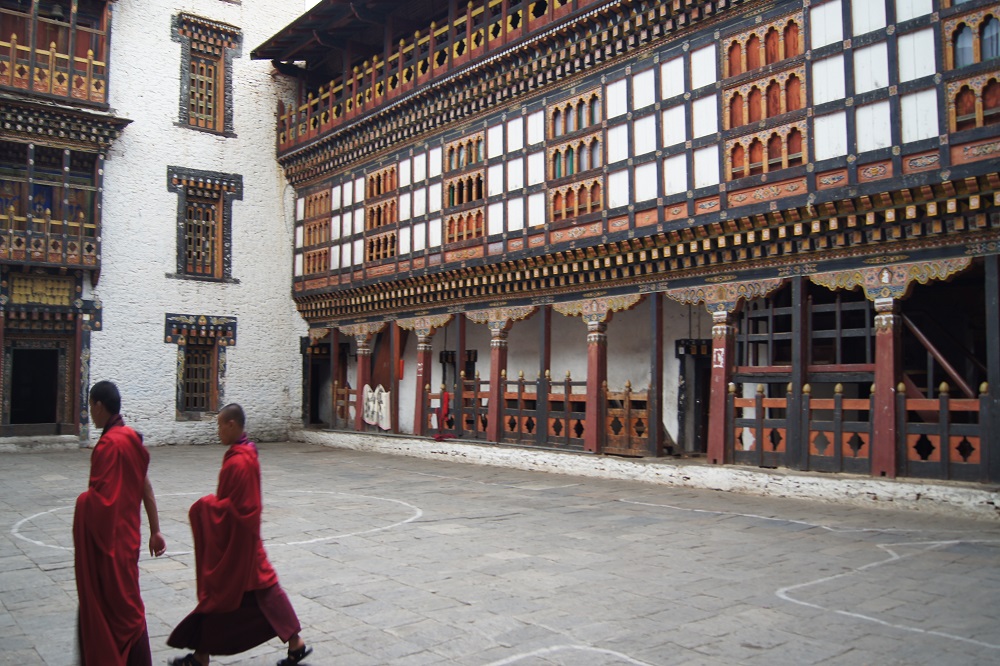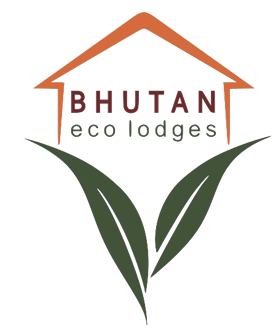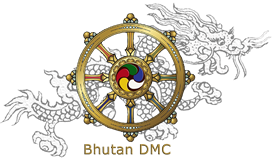Bhutan – A Fascinating all Road Journey
Traversing length and breadth of the Himalayan Kingdom of Bhutan by road!
Duration: 17 Nights 18 Days
Places visited: Surface entry via Phuentsholing, Paro along with Tigers Nest, Haa Valley across Chele la, Thimphu, Punakha via scenic Dochu La, Wangduephodrang, Gangtey, Trongsa, Bumthang, Mongar, Trashigang, Trashigyantse & ending trip at eastern border Samdrup Jonkhar.
Best Seasons to Visit: March to May & September to early December
Moderate Seasons to Visit: January, February, June to August & Late December
Trip Grade: Moderate to fairly moderate (Involves long hikes & long drive)
Tour Type/Group Size: Private tour of you and your friends and families only
Special Notes: Itinerary can be fine-tuned depending on your interests
Day 1: Arrival in Phuentsholing
On arrival in southern Bhutan’s border town of Phuentsholing, met by our representative and after clearing immigration formalities, check in to the Hotel.
Later in the day, take a stroll in Phuentsholing town and visit Zangtho Pelri Lhakhang. Situated in city centre, this small temple represents the heaven of Guru Rinpoche.
Overnight at the hotel in Phuentsholing (Altitude 250m).
Day 2: Phuentsholing – Paro (150 km, approx. 4.1/2-hour drive)
After breakfast, drive to Paro.
4 km ahead of Phuentsholing visit to Kharbandi Gompa, the beautiful monastery situated in garden of tropical plants and flowers. The monastery contains paintings depicting scenes from the life of Buddha and statues of Zhabdrung Ngawang Namgyal and Guru Rinpoche.
From the monastery garden there is a splendid view of Phuentsholing and plains of West Bengal (India) and their tea gardens beyond.
Then proceed onwards to a scenic drive to Paro. On arrival in Paro, check into the hotel.
Afternoon proceed to visit Ta Dzong, originally built as Watchtower, which now houses National Museum. The extensive collection includes antique thangkha paintings, textiles, weapons & armour, household objects and a rich assortment of natural and historic artifacts.
Later visit Rinpung Dzong, meaning ‘fortress of the heap of jewels’, which has a long and fascinating history. Along the wooden galleries lining the inner courtyard are fine wall paintings illustrating Buddhist lore such as four friends, the old man of long life, the wheel of life, scenes from the life of Milarepa, Mount. Sumeru and other cosmic Mandala.
Overnight at the hotel in Paro (Altitude 2,280m).
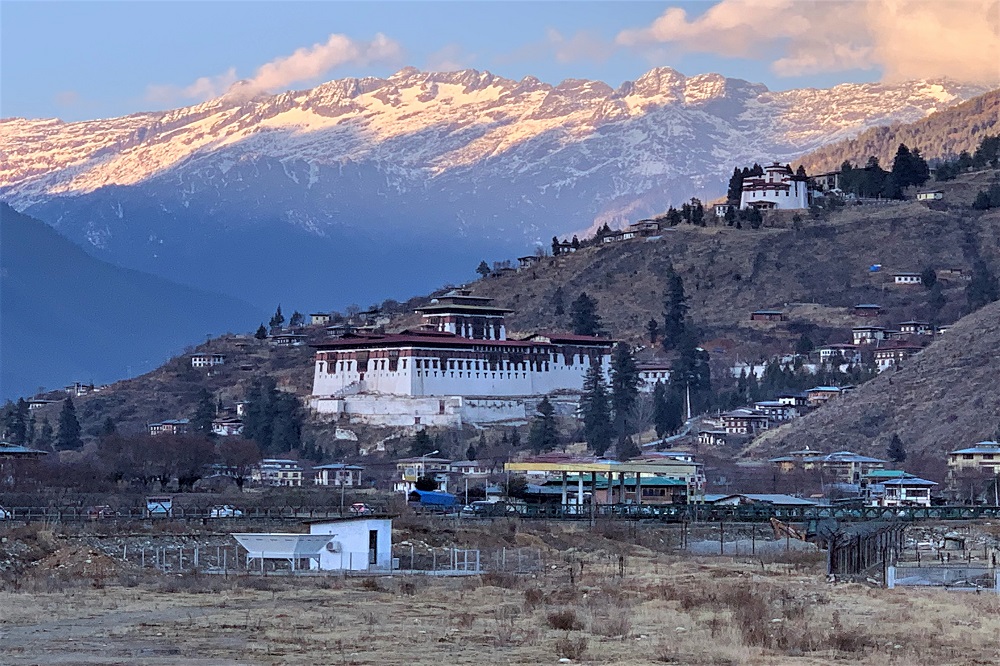
Day 3: Paro
After breakfast excursion to Taktshang Monastery also known as Tigers’ Nest (approx. 5-hour round trip walk). It is one of the most famous of Bhutan’s monasteries, perched on the side of a cliff 900m above the Paro valley floor. Legends say that Guru Rinpoche arrived here on the back of a tigress and meditated at this monastery and hence it is called ‘Tiger’s Nest’. This site has been recognised as a most sacred place and visited by Zhabdrung Ngawang Namgyal in 1646 and now visited by all Bhutanese at least once in their lifetime.
Later in the afternoon drive to the base of Drukgyel Dzong, a ruined fortress where Bhutanese warriors fought Tibetan invaders centuries ago. The snowy dome of sacred Chomolhari, ‘mountain of goddess' can be seen in all her glory from the approach road to the Dzong.
Evening visit the 7th century Kyichu Lhakhang, one of the 108 temples built in the Himalayas by Tibetan King, Songtsen Gampo. The building of this temple marks the introduction of Buddhism in Bhutan.
Overnight at the hotel in Paro (Altitude 2,280m).
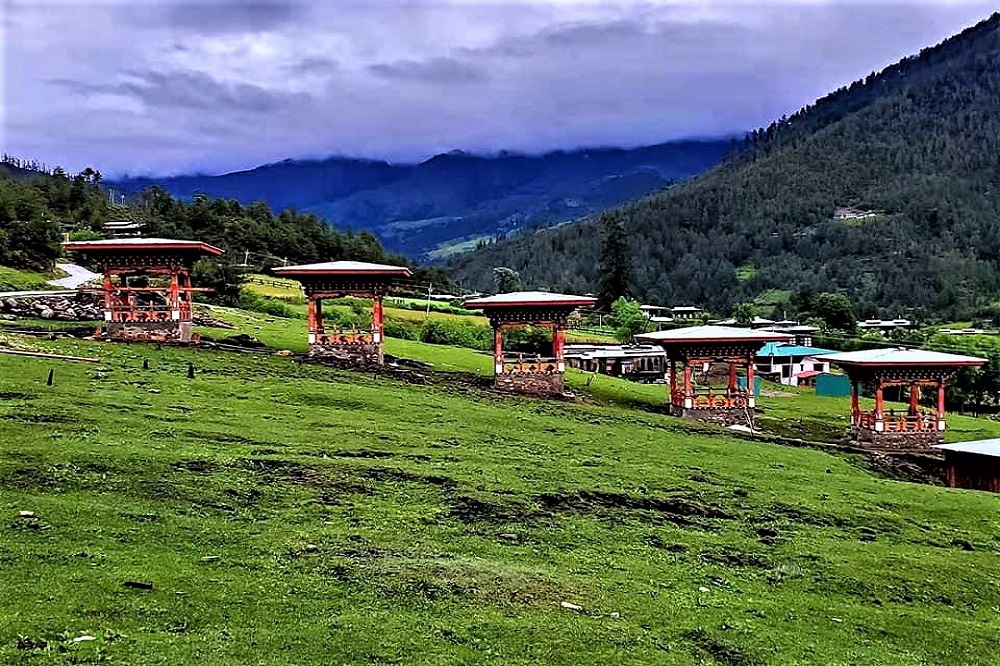
Day 4: Paro – Haa valley (70km, approx. 3-hour drive)
After breakfast drive to Haa valley, en route taking a short stop at Chelela pass. Located at an elevation of 3,988 meters, Chelela is considered to be one of the highest motorable passes in Bhutan. About an hour's drive along a thickly forested road, this Pass is a botanical paradise, providing stunning views of the sacred mountain Jomolhari and Jichu Drake. It is also marked by hundreds of prayer flags fluttering in the wind.
From Chelela, embark on a fascinating excursion to Kila Gompa, a nunnery perched on a steep cliff face at 3500m. This staggering site manages to house 7 small temples and about 70 nuns. From Chelela pass, the Gompa is about an hour walk amidst magnificent wooded area.
Then progress onward to Haa valley. The Haa valley was opened for the first time to foreign tourists in 2002. Also known as the ‘Hidden-Land Rice Valley’, Haa is culturally rich valley and some of famous sites in this region are: 7th century Lhakhang Karpo (White temple) and Lhakhang Nagpo (Black temple) at the foothills of a venerated three brotherly mountains known as Meri Puensum. The Valley of Haa lies on the western most edge of Bhutan, its northern boundaries with the Chumbi Valley of Tibet, dividing it from the Indian province of Sikkim. Haa is one of the 20 districts or dzongkhags of Bhutan and one of the least populated. Most of its landmass is covered by dense forest and the remainder under fields of wheat and barley, with a little rice towards its lower reaches and the accessible side valleys. Meadows support the raising of yak, cattle, chicken, pigs and horses.
Afternoon visit Lhakhang Karpo (White temple), established in the 7th century by Tibetan King Songtsen Gempo. According to legends, a black and white pigeon were released to select the site for temples and the white pigeon landed on the foothills of the three towering mountains worshipped as ‘Rigsum gonpo’ and is where this temple stands today.
Then visit, Lhakhang Nagpo (Black temple), built in 7th century by Tibetan King Songtsen Gempo and situated towards the north of Lhakhang Karpo. Lhakhang Nagpo serves as the seat for the guardian deity ‘Da Do Chen’. The principal relic of the monastery is the Choe-Lung-Truel Sum. Both these temples stand as the guardian sentinels keeping watch at the south entrance of Haa valley.
Overnight at the hotel in Haa valley (Altitude 2,670m).
Day 5: Haa valley - Thimphu (115km, approx. 4-hour drive)
After breakfast drive to Bhutan’s capital town Thimphu with en route stop near Dogar Dobji Dzong, a 16th century structure, built by the brother of the Divine Madman, Drukpa Kinley. Legend has it that the statue of the Guru Landrachen housed here, complained when the apostate Tibetan monarch Langdharma tried to smash it with a hammer. This dzong became Bhutan’s first jail in 1976 but has since returned to its monastic origins.
Drive onwards, stopping en route at Chuzom, the confluence of Paro and Thimphu rivers.
The capital town of Bhutan and the centre of government, religion and commerce, Thimphu is a unique city with unusual mixture of modern development alongside ancient traditions. Home to civil servants, expatriates and monk body, Thimphu maintains a strong national character in its architectural style. Besides its position as the seat of government, its many glittering monuments, temples, monasteries, dzongs, premier museums and institutions make it a fascinating destination.
On arrival in Thimphu check into the hotel. Later in the evening visit Memorial Stupa, built in 1974 to honour the Third King, Druk Gyalpo, Jigme Dorji Wangchuck (1928-1972). The stupa is a prominent landmark in the city with its golden spires and bells. In 2008, it underwent extensive renovation. This stupa is unlike others as it does not enshrine human remains and only Druk Gyalpo’s photo in a ceremonial dress adorns a hall on ground floor. When he was alive, His Late Majesty Jigme Dorji Wangchuk wanted to build a chorten to represent the mind of Buddha.
Later enjoy a stroll walk around Thimphu city centre.
Overnight at the hotel in Thimphu. (Altitude 2320m)
Day 6: Thimphu
Morning after breakfast, drive to see the iconic gigantic Buddha Dordenma (Vajra seated), the world’s largest sitting bronze statue. Majestically situated at Kuenselphodrang, it is an object of great veneration to all sentient beings. The land at Kuenselphodrang measuring 145 acres was gifted to Monks Body by His Majesty the Fourth King of Bhutan. The Park conserves 798.4 acres of forest area that surrounds the Buddha Dordenma statue. Dedicating it to the 60th birth anniversary celebration of His Majesty the Fourth Druk Gyalpo, His Holiness the Je Khenpo consecrated the 201 feet tall Buddha Dordenma statue at the Kuenselphodrang on 24th September 2015.
After this insightful visit drive to Textile Museum, established in 2001 under the royal patronage of Her Majesty Gyalyum Sangay Choden Wangchuck. The museum is managed by the Department of Culture, Ministry of Home & Cultural Affairs, Royal Government of Bhutan. Exhibitions here introduce the major weaving techniques, styles of local dress and textiles made by women and men.
Institute for Zorig Chusum, commonly known as Arts & Crafts School or Painting School is an important learning center that offers a six-year course on the 13 traditional arts and crafts of Bhutan. On a visit, one can see students learning the various skills taught at the school.
Located below the main town, Centenary Farmers Market popularly known as Weekend market is a pleasant, colourful & delightful place to mingle with locals. Farmers come from all over the country to sell their farm products in this market. Also available here are the handicrafts and artifacts, to purchase.
Then visit Changangkha Lhakhang, one of the ancient temples in Thimphu established on a site chosen by Phajo Drukgom Shigpo, the founder of Drukpa lineage in Bhutan. The central statue here is Chenrezig in a manifestation with 11 heads. From temple courtyard, there is fascinating view of Thimphu valley.
Conclude the sightseeing of the day with visit of Trashichhoedzong that has been the seat of the government since 1952 and presently houses the throne room and offices of His Majesty the King, the Secretariat and the Ministries of Home affairs and Finance. The dzong is located close to Thimphu town, next to the banks of the Wang Chhu River. It is an impressively large structure, surrounded by well-kept lawns and beautiful gardens.
Evening free to explore the government-run Handicrafts Emporium and local crafts Bazaar, to browse through example of Bhutan's fine traditional arts constituting hand-woven textiles, thangkha paintings, masks, ceramics, slate and wood carvings, jewellery, interesting items made from local materials.
Overnight at the hotel in Thimphu. (Altitude 2,320m)
Day 7: Thimphu – Dochu La - Punakha (75km, approx. 3-hour drive)
After breakfast drive to Punakha across Dochu-la pass (3,088m/ 10,130 ft) stopping here to take in the view and admire the chorten, mani wall, and prayer flags which decorate the highest point on the road. If skies are clear, the following peaks can be seen from this pass (left to right): Masagang (7,158m), Tsendagang (6,960m), Terigang (7,060m), Jejegangphugang (7,158 m), Kangphugang (7,170 m), Zongphugang (7, 060 m), a table mountain that dominates the isolated region of Lunana - finally Gangkar puensum, the highest peak in Bhutan at 7,570m.
Afternoon visit Punakha Dzong. Also known as ‘The Palace of Great Bliss’, Punakha Dzong was built strategically at the junction of Pho Chhu and Mo Chhu rivers in 1637 by Zhabdrung Ngawang Namgyal to serve as the religious and administrative centre of the region. The Dzong has played an important role in Bhutan’s history and on 17 December 1907, the first King of Bhutan Gongsar Ugyen Wangchuk, was crowned here. Damaged by six catastrophic fires, an earthquake and once by flood, the Dzong has been fully restored by the fourth King. Dzongchung (or the little Dzong), built in 1328 by saint Ngagi Rinchen can still be seen opposite the main Dzong.
Thereafter a short walking excursion to Chimi Lhakhang:
The Chimi Lhakhang (temple), situated on a round hillock in the centre of Punakha valley near Lobesa, was built in 1499 by the 14th Drukpa hierarch, Ngawang Choegyel, after the site was blessed by the maverick saint Drukpa Kuenley who in the late 15th century used humour, songs and outrageous behaviour to dramatise his teachings and owing to this also known as ‘Divine Madman’. The Lhakhang is situated about 10 km from centre of Punakha town near Sopsokha village, from where a 20-minute walk through fields of mustards and rice, leads to a hillock that is the site of temple. Prayer flags are lined all along the road from the tiny village hamlet known as Yowakha, along a stream to the monastery. All houses in the village are decorated with paintings of phalluses on their exterior walls. The lama Kuenley had called the hillock where the monastery exists as the breast of a woman because of its round shape.
Overnight at the hotel in Punakha (Altitude 1,300m)
Day 8: Punakha - Gangtey (85km, approx. 3-hour drive)
After breakfast drive to Gangtey, one of the most beautiful valleys in Bhutan. The surprise of finding such a wide, flat valley without any trees after the hard climb through dense forests is augmented by an impression of vast space, an extremely rare experience in Bhutan where most of the valley’s are tightly enclosed.
Afternoon visit the Gangtey Goempa. Perched on a small hill that rises from the valley floor, the Gangtey Monastery is the only Nyingmapa monastery on the western side of the Black Mountain’s and also the biggest Nyingmapa monastery in Bhutan. The Monastery is surrounded by a large village inhabited mainly by the families of the Gomchens who take care of the Monastery.
Take a stroll around Gangtey village and also explore the Phobjikha Valley. This place is the winter home of black necked cranes (from November to February) that migrate from the arid plains in the north to pass winter in milder and lower climate. Phobjikha, at an altitude of 3,000 m, falls under the district of Wangduephodrang and lies on the periphery of the Black Mountain National Park.
Also visit Black Neck Crane Information Centre. Situated on the edge of the forest and wetland along the main road of Phobjikha valley, the black-necked crane information Centre has an observation room equipped with high power telescope and spotting scopes for catching the best view of the cranes. The centre also offers display information that outline the natural and cultural history of the area. There is a small gift shop, which sells handicrafts produced by the local people.
Overnight at the hotel in Gangtey / Phobjikha (Altitude 3,000m)
Day 9: Gangtey – Pele La pass - Trongsa (85km, approx. 3-hour drive)
Morning after the breakfast, continue on to central Bhutan town of Trongsa across Pele-la pass (3,300m/10,830 ft), the traditional boundary between east and west. The pass is marked by a white chorten prayer flag. There is an abrupt change in vegetation at this point, with mountain forest replaced by high altitude dwarf bamboo.
Drive further and stopping en route at Chendbji Chorten, patterned on Kathmandu’s Swayambhunath Stupa, with eyes panted at four cardinal points. It was built in the 18th century by Lama Shida from Tibet, to cover the remains of an evil spirit that was subdued at this spot.
Arrive at Trongsa and check into the hotel, followed by lunch.
Afternoon visit the Ta Dzong - a cylindrical stone structure rising five storeys, was built in 1652 by Chogyal Minjur Tempa, a task entrusted to him by Zhabdrung Ngawang Namgyal. After more than 350 years, it has been resurrected into a classy museum, that represents a tasteful blend of tradition and modernity. The Ta Dzong is a living museum and the main lhakhang in the Utse is dedicated to the Maitreya Buddha (Gyaltsab Jampa), also known as the Future Buddha). A Khesar Lhakhang is dedicated to Khesar of Ling. The Ta Dzong is the only structure, that has been restored specifically to tribute the Wangchuck dynasty as Bhutan celebrates the centenary of the Monarchy.
Then visit the Trongsa Dzong. Built in 1648 it was the seat of power over central and eastern Bhutan. Both the first and second Kings of Bhutan ruled the country from this ancient seat. All Bhutan Kings were invested as Trongsa Penlop (‘governer’) prior to ascending the throne. The Dzong is a massive structure with many levels, sloping down the contours of the ridge on which it is built.
Overnight at the hotel in Trongsa (Altitude 2,310m)
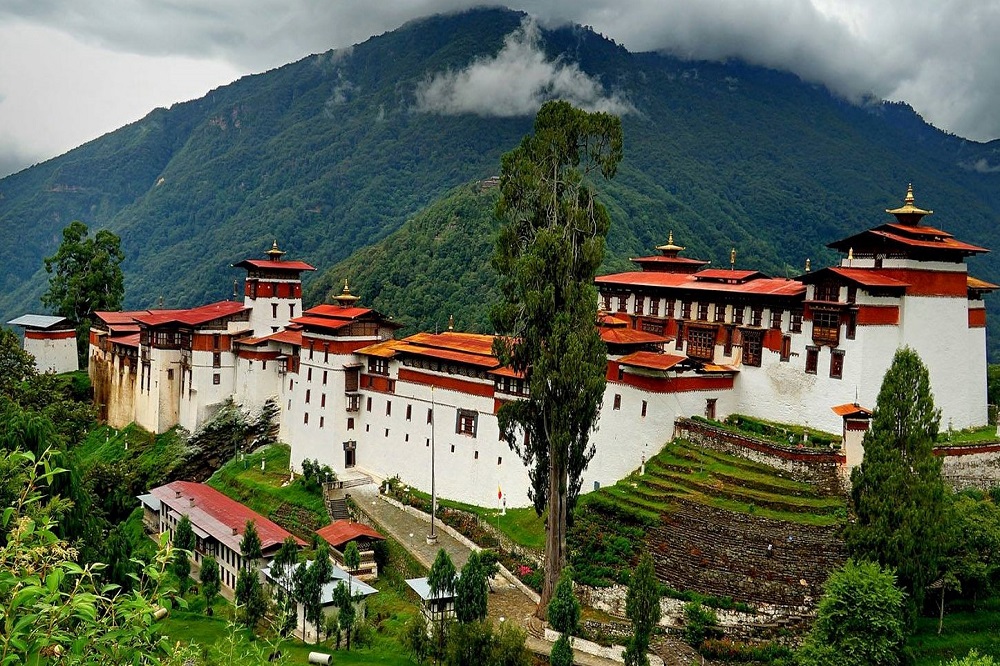
Day 10: Trongsa – Yutong La pass - Bumthang (Jakar) (68km, approx. 2.1/2-hour drive)
Post breakfast, proceed for Bumthang, over the Yutong-la pass (3,400m/ 11,155 ft). The road winds steeply up to the pass, 28 km from Trongsa, then runs down through coniferous forest into a wide, open cultivated valley known as the Chumey valley. Also visit Yathra (woolen fabric) weaving village in Chumey valley.
On arrival in Bumthang, check into the hotel.
Later in the afternoon, proceed to visit Jambay Lhakhang. This ancient temple believed to have been built in 659 by Tibetan King Songtsen Gampo on the same day as Kyichu Lhakhang in Paro. It is one of the 108 monasteries built by him to subdue evil spirits in the Himalayan region. Its present architectural appearance dates from the early 20th century.
Drive onwards for less than 10 minutes to visit Kurje Lhakhang, consisting of three temples. The one on the right was built in 1652 on the rack face where Guru meditated in the 8th century. Second temple is built on the site of a cave containing a rock with the imprint of Guru's body and is therefore considered the most holy. The third temple was built in 1990s by Ashi Kesang, the Queen Mother. These three temples are surrounded by a 108 chorten wall.
Evening take a stroll around charming Jakar town, visiting shops and local market.
Overnight at the hotel in Bumthang (Jakar) (Altitude 2,600m)
Day 11: Bumthang
Morning after breakfast, visit Jakar Dzong, founded by great grandfather of the first Zhabdrung is next in sightseeing schedule. This Dzong was initially built as a monastery in 1549. It was upgraded after the Zhabdrung had firmly established his power in 1646. The Dzong is now used as administrative centre for Bumthang valley, and also houses the regional monk body.
Then visit to Konchogsum Lhakhang. This temple was built in the 6th century but was renovated in 1995, which accounts for its fresh look. It contained a large bell and it is said that when this bell was rung it could be heard all the way in Lhasa in Tibet. During the 17th century a Tibetan Army tried to steal this bell but was too heavy and they dropped it and cracked it which is now displayed at the National Museum in Paro.
Then get an insight into textile weaving at Dorbji Weaving Centre, housing about a dozen looms.
After lunch, visit Lhodrak Kharchhu monastery. Located above the main town, about 3 km from Chamkhar town, the monastery was founded by Namkhai Nyingpo Rinpoche in 1984 who was recognized at a very young age by H.H. the 14th Dalai Lama and H.H. 16th Karmapa as the reincarnation of a Tibetan lama whose spiritual lineage dates back to the nearest disciples of the great 9th century master. The monastey has become part of an extensive effort to preserve and revitalize Tibetan culture.
Then pay a special visit to Bumthang Brewery. At this state-of-the-art mincobrewery one can learn about the brewing of Swiss-style unfiltered Weiss beer, and also sample end product in adjacent Panda Beer Garden Café.
Later in the evening visit to Tamshing Lhakhang. Located across the river from Kurje Lhakhang, this temple was founded in 1501 by Terton Pema Lingpa, the re-incarnation of Guru Padmasambhava. The monastery has very ancient religious paintings like 1,000 Buddhas and 21 Taras (female form of Buddhistava). The temple was restored at the end of the 19th century.
Overnight at the hotel in Bumthang. (Altitude 2,600m)
Day 12: Bumthang – Tang Valley (37km, approx. 1.1/2-hour drive)
After breakfast drive to Tang valley which is one of the four fascinating Bumthang valleys. Terton (treasure discoverer) Pema Lingpa, the famous saint, was born in the pristine Tang valley (2800m) so of great spiritual significance. To reach here, from Bumthang central valley, follow west-east road for about 11km towards Ura valley that later branches north to Tang valley.
Immediately after the diversion, stop for a short walk on path lined with prayer flags to Membartsho (the burning lake) where Pema Linga said to have discovered several of Guru Rinpoche's hidden treasures. The road then ascends towards Dranchel village followed by Jamzhog village, arriving at Mesithang and short distance from here is Tang Rimochen Lhakhang, where Guru Rinpoche had performed meditation. The road then approaches the bridge at Kizum over Tang chhu river, climbing up the hill to Ogyen Choling manor built in 1898 while its origin going back to 14th century. 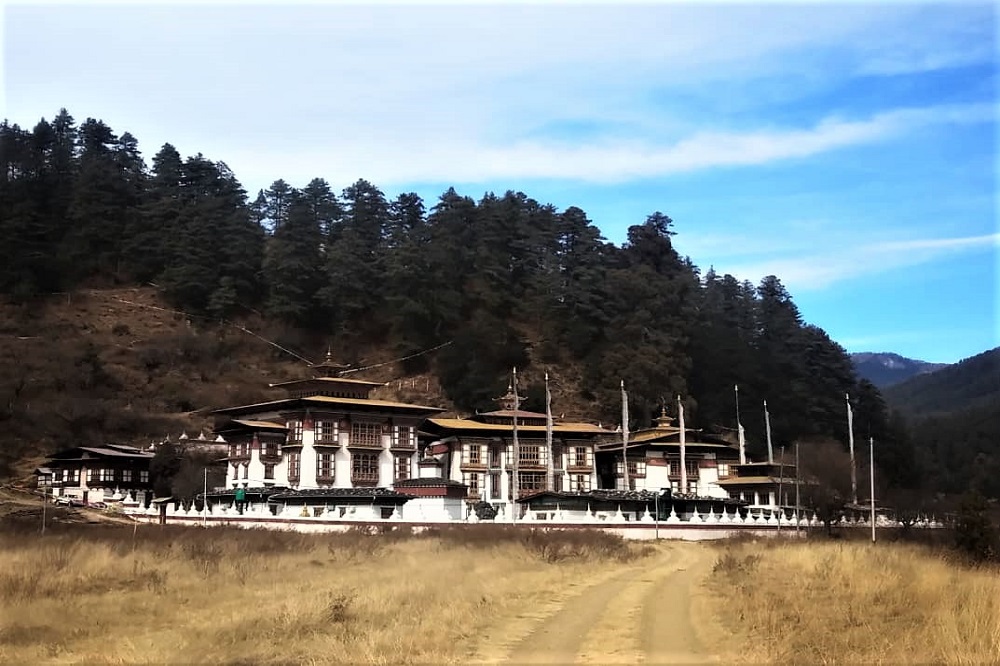
Afternoon explore the picturesque, charming villages in Tang valley. Also visit Ogyen Choling Palace which is now housing the Family Museum, a place that transports visitors to another world and time. The visitors here view permanent exhibits recreated to capture the ambience of the lifestyle of the Trongsa Penelop (Governor) Tshokey Dorji and his household. It also serves as retreat for those engaged in religious history. Bhutan's history truly unfolds here.
Overnight at the lodge in Tang valley (Altitude 2,800m)
Day 13: Tang Valley – Thrumshing La pass - Mongar (187km, approx. 6.1/2-hour drive)
After early breakfast the journey continues eastwards, winding through more rugged terrain. The drive to Mongar takes about 6.1/2 hours with spectacular view en route. Drive up into the hills above the valley and then ahead visit lovely Ura village. Progressing further climb sharpely to the highest point on Bhutan’s motorable road network, Thrumshing-la pass (4,000m/13,125 ft).
From here, the road gradually descends to the alpine valley of Sengor, with wonderful views of cascading waterfalls and the hills of eastern Bhutan along the way. Vegetation changes from alpine to subtropical with the loss of height, and bamboos and luxuriant ferns overhang the road as we drop down to the valley floor. The descent stops at 700m/2,300ft, where one crosses the Kurichu river. Then ascend again through pine forests, maize fields and eastern hamlets to reach Mongar town, high on a gentle slope above the valley.
The second largest town in sub-tropical east, the Mongar town is situated on the side of a hill, in contrast to most towns of Western Bhutan which are located on the valley floor.
Late afternoon, visit Mongar Dzong, built in the 1930s and one of Bhutan’s newest dzongs, but constructed in the same way as all previous dzongs, without either plans or the use of nails.
Evening at leisure on a familiarization walk in Mongar town.
Overnight at the hotel in Mongar (Altitude 1,620m).
Day 14: Mongar – Lhuntse (70 km, approx. 3-hour drive)
After early breakfast, proceed to Lhuntse which is one of the most rural and isolated districts in Bhutan. The landscape in the region is spectacular with stark cliffs and gorges, beautiful conifer and pine forests, and remote villages with rice, millet and corn fields. The region is renowned for textile-producing and notably the Kurtoe region of Lhuntse District is the ancestral homeland of the Bhutanese Royal Family.
On the way, visit Takila-Guru Statue. This world’s largest statue of Guru Padsambhava of 173 feet height stands tall on the Takila mountain slope, overlooking the valley of Tangmachu. Guru’s statue is surrounded by eight big and 108 small chortens and serves an important pilgrimage site as well as place for meditation and retreat.
Later in the day visit Lhuntse Dzong. Sitting on a rocky outcrop overlooking the Kuri Chhu river, this mighty fortress was built by Trongsa Penlop, Chogyal Minjur Tempa in 1654 upon the site of an older temple established by Nagi Wangchuk in 1552. Since then it has been renovated several times and now houses the administrative and religious centre of the district.
Then a special visit to Khoma village, famous for distinctive ‘Kishuthara’ weaving and the fabrics comprise the main income source of the villagers. Kishuthara is a laborious weaving technique with intricate supplementary weft ‘hand-laced or -wrapped’ multi-colored patterns. When made with silk weft and warp, it’s the most expensive textile in Bhutan and highly sought after by collectors.
After an eventful day, drive back to Autsho (Lhuntse) for overnight stay (Altitude 1,700m).
Day 15: Autsho (Lhuntse) – Trashigang (133 km, approx. 4.1/2-hour drive)
Morning after breakfast, proceed to Bhutan’s largest eastern town of Trashigang which is located 551km away from Bhutan’s capital city, Thimphu. Once the centre of a busy trade route with Tibet, Trashigang is today the junction of east-west highway with road connecting to Samdrup Jongkhar and then to the Indian States of Assam. This town is also used as the market place for the semi nomadic people from Merak and Sakteng.
Afternoon visit Trashigang Dzong, built in 1659. The Dzong commands a remarkable view over the surrounding countryside, standing at the extreme end of a rocky outcrop far above the river gorge. It serves as the administrative seat for the district and part of the dzong is occupied by the local Drukpa monastic community.
Evening at leisure in Trashigang town.
Overnight at the hotel in Trashigang (Altitude 1,150m).
Day 16: Trashigang (Full day excursion to Trashiyangtse)
After breakfast, visit the temple of Gom Kora, set on a small alluvial plateau, overlooking the river. Located 24 km from Trashigang town, Gom Kora is a famous place, as Guru Rinpoche is said to have subdued a demon here, trapping it in a rock. Then traversing on down the road to Doksum village, where one may see women busily weaving traditional Bhutanese fabric. The road turns into the from hills here, running up the side of a winding river valley to Trashiyangtse.
In former times, Trashiyangtse was an important center because it lies on one of the carvan routes leading from western and central Bhutan. Trasiyangtse is now a rapidly growing town and the administrative center for this district. The area is famous for its wooden containers and bowls, which make inexpensive, attractive and useful souvenirs of a visit to this remote region.
Visit Trashiyangtse Dzong, which overlooks the town and was built in the late 1990s when the new district was created.
Also visit Chorten Kora. This dazzling white stupa is situated on the riverbank below the town. Constructed in 1740 by Lama Ngawang Loday, it is built in the same style as Bodhnath stupa in Nepal, with eyes painted at the four cardinal points. During the second month of the lunar calendar there is an interesting celebration here, known as 'Kora'.
In the evening, return to Trashigang.
Overnight at the hotel in Trashigang. (Altitude 1,150m)
Day 17: Trashigang — Samdrup Jongkhar (180 km, approx. 6-hour drive)
Today is the last day in Bhutan and after breakfast drive to south-eastern Bhutanese border town of Samdrup Jongkhar. Trashigang — Samdrup Jongkhar road got completed in 1965 and the journey on this stretch takes about 6 hours. Along the way, pass by Kanglung town, which is home to Sherubtse College, the first college in country founded in 1978 and one of the most famous academic institutions of the country.
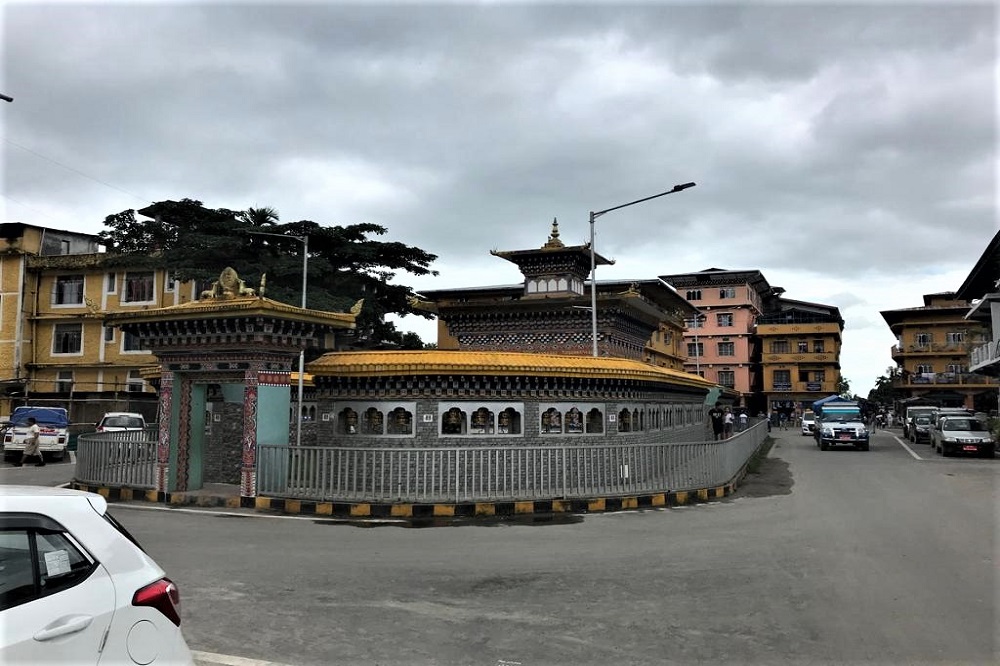
Further ahead take a short stop at Khaling. ‘Kha’ in Bhutanese language Dzongkha means ‘Bird’ and ‘ling’ means ‘valley’. This is a lush green valley, blessed with an innumerable variety of birds. One of the oldest schools is located here, the ‘Jigme Sherubling Higher Secondary School.’ At Khaling, one will also have our opportunity to see the traditional, colourful Bhutanese weaving. From here the road descends fairly rapidly to the plain through a dense tropical forest with an abundance of teak, bamboo and ferns.
Arrive Samdrup Jongkhar by late afternoon and check into the hotel.
Evening take a stroll around the town and visit the Zangtho Pelri temple built in 1978 by the late Minister of Home Affairs. It represents Guru Rinpoche’s paradise.
Overnight at the lodge in Samdrup Jongkhar (Altitude 280m).
Day 18: Depart Samdrup Jongkhar – Guwahati, Assam (India)
After breakfast, picked up by Indian representative from the Samdrup Jongkhar hotel for onward drive to Guwahati.
HOTELS IN THIMPHU
HOTELS IN PUNAKHA & WANGDUE
HOTELS IN GANGTEY
HOTELS IN TRONGSA
HOTELS IN BUMTHANG
HOTELS IN MONGAR
HOTELS IN TRASHIGANG
HOTELS IN SAMDRUP JONGKHAR
HOTELS IN PHUENTSHOLING
HOTELS IN HAA
HOTELS IN GELEPHU
HOTELS IN ZHEMGANG
RESTAURANTS IN PARO
RESTAURANTS IN THIMPHU
RESTAURANTS IN PUNAKHA
TOUR ITINERARIES
TREKKING ITINERARIES
SPECIAL INTERESTS TOURS
UNIQUE FESTIVALS & FAIRS
BLOG
